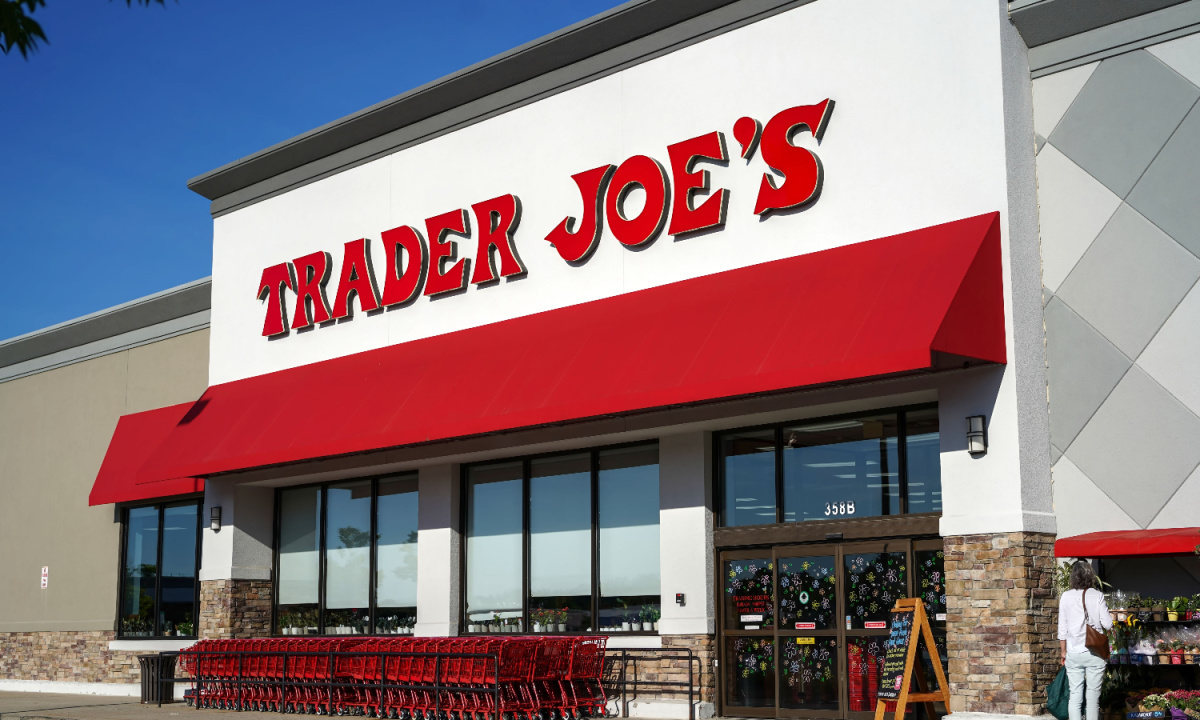Trader Joe’s CEO Bucks Grocery Industry Trends by Eschewing Self-Checkout

As many grocers look to technology to boost efficiency — sometimes at the cost of service — Trader Joe’s is holding the line against self-checkout.
On an interview for the most recent episode of the grocer’s podcast, Inside Trader Joe’s, Bryan Palbaum, the company’s chairman and CEO, and Jon Basalone, the vice CEO and president, responded to the question of whether the chain would soon be adding self-checkout to its stores.
“It’s not fun. … I have fun bagging groceries and working at the register. Self-checkout is work. I don’t want that,” Palbaum said.
Trader Joe’s is known for its friendly employees, and Basalone argued that the addition of this technology would be against that ethos, while waving away the typical motivations for grocers to implement these capabilities.
“We believe in people, and we’re not trying to get rid of our crew members for efficiency’s sake or whatever the — I don’t know what the reasons are people put self-checkout in,” Basalone said.
Certainly, efficiency is a top-of-mind concern for many grocers today, with fluctuating prices putting pressure on margins. Additionally, next-gen self-checkout capabilities such as smart carts and “Just Walk Out”-style cashierless checkout enable grocers to link the brick-and-mortar experience to consumers’ digital profiles, driving loyalty and gathering key data about their shopping behaviors.
Notably, utilizing this technology is not only a benefit to grocers. In some cases, consumers seek out these options.
Findings highlighted in the February edition of PYMNTS’ Retail Tracker® series, “Innovating the Retail Checkout Experience,” created in collaboration with LS Retail, revealed that 85% of retail customers say self-checkout is faster than waiting for a cashier, and 60% prefer self-checkout to interacting with a cashier.
Plus, findings from PYMNTS’ study “Big Retail’s Innovation Mandate: Convenience And Personalization,” created in collaboration with ACI Worldwide, which drew from a survey of 300 major retailers in the U.S. and the U.K., found that 61% of grocers reported believing that shoppers would be very or extremely likely to switch merchants if self-checkout kiosks were not provided.
Additionally, data from PYMNTS’ 2021 study “Today’s Self-Service Shopping Journey: The New Retail Expectation,” which was created in collaboration with Toshiba Global Commerce Solutions and drew from a survey of more than 2,000 U.S. adults, found that 1 in 3 consumers used self-checkout options for their most recent in-store grocery purchase. Since then, that share has likely only increased.
Grocery technology giant Instacart, for its part, has been rolling out self-checkout solutions, including Scan & Pay and smart carts, to more retailers. Grocers also continue to tap more traditional self-service kiosks, while some are even looking to computer-vision-powered grab-and-go checkout.
Still, in many parts of consumers’ day-to-day routines, many are missing the kind of face-to-face service that these technologies replace. Take, for instance, restaurants.
Data from a PYMNTS survey of nearly 2,500 U.S. consumers revealed that more than three-quarters (77%) of restaurant consumers say staff friendliness is the most important feature a restaurant needs to provide. The same study found that 63% of diners believe restaurants are becoming increasingly understaffed, and 39% said that they are becoming less and less personal.

